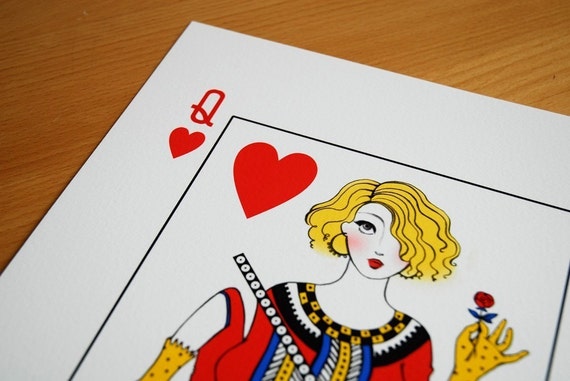Playing cards have been a popular form of entertainment for centuries, and one card that has captured the imagination of many is the Queen of Hearts. This regal and mysterious figure has become a symbol of love, power, and beauty. In this article, we will explore the Queen of Hearts playing card through a cultural lens, focusing on its significance in Asian communities around the world.
 The Queen of Hearts: An Iconic Asian Symbol
The Queen of Hearts: An Iconic Asian Symbol
The image of the Queen of Hearts has deep-rooted connections in Asian culture. In ancient Chinese mythology, she is often associated with the goddess Guanyin, a figure of compassion, mercy, and unconditional love. This association has made the Queen of Hearts a beloved symbol in many Asian communities.
In traditional Chinese culture, the Queen of Hearts is also seen as a representation of female empowerment. The card’s strong and confident demeanor resonates with the values of strength and resilience that are admired and celebrated in many Asian cultures. As a result, the Queen of Hearts has become a popular motif in various forms of art, including paintings, sculptures, and tattoos.
 Artistic Depictions of the Queen of Hearts
Artistic Depictions of the Queen of Hearts
Artists have long been fascinated by the allure of the Queen of Hearts playing card, creating stunning and evocative representations that capture her beauty and mystery. One example is an archival print that showcases the Queen of Hearts in all her regal glory. The intricate details and vibrant colors of this artwork highlight the rich cultural symbolism associated with this card.
Another artistic interpretation of the Queen of Hearts can be found in a greeting card. This beautifully crafted piece features the Queen surrounded by hearts and other elements that symbolize love and affection. The card’s design is a testament to the enduring popularity of the Queen of Hearts in Asian cultures.
 Cultural Significance and Celebrations
Cultural Significance and Celebrations
Throughout Asia, various festivals and celebrations take place to honor the Queen of Hearts and her symbolism. In Japan, for example, the Hina Matsuri (Doll Festival) is celebrated every March, and it is customary to display a set of dolls representing the emperor, empress, and other members of the imperial court. The Queen of Hearts often occupies a prominent place in this display, showcasing her importance in Japanese culture.
In Chinese culture, the Queen of Hearts is often associated with love and relationships. During the Qi Xi Festival, also known as the Chinese Valentine’s Day, couples exchange gifts and express their love for one another. It is common to see decorations featuring the Queen of Hearts as a symbol of love and affection during this festive occasion.
 The Queen of Hearts in Playing Card Culture
The Queen of Hearts in Playing Card Culture
Playing cards have long been a source of entertainment in Asia, with a rich history that dates back centuries. The Queen of Hearts holds a special place in this tradition, often serving as one of the most desirable cards in various card games. Her presence in a player’s hand is seen as a sign of good luck and fortune.
In addition to its cultural significance, the Queen of Hearts is also a popular motif in card tattoo designs. Many people choose to ink this powerful and alluring symbol on their bodies as a way to express their love for card games and the rich cultural heritage associated with them.
 In Conclusion
In Conclusion
The Queen of Hearts is a powerful and iconic figure that holds deep cultural significance in Asian communities. As a symbol of love, power, and beauty, she has captivated the hearts and imaginations of people for centuries. From art prints to greeting cards, her image has been immortalized in various forms of artistic expression. Whether played in a card game or adorned as a tattoo, the Queen of Hearts continues to inspire and enchant individuals around the world with her regal presence and timeless allure.